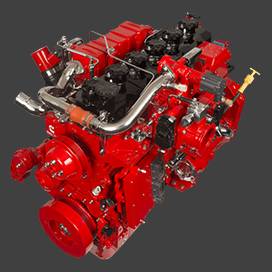10 月 . 16, 2024 03:52 Back to list
Understanding the Functionality of Brake Drums in Automotive Systems
What Does the Brake Drum Do?
The brake drum is a vital component in the braking system of many vehicles, particularly those that utilize drum brakes. Understanding its function and importance can help drivers appreciate the engineering behind their vehicles and recognize the need for regular maintenance.
What is a Brake Drum?
A brake drum is a cylindrical component that is connected to the wheel of a vehicle. Its primary function is to provide a surface against which brake shoes press to create friction that slows down or stops the vehicle. Brake drums are usually made from cast iron or aluminum, as these materials offer strength and durability under the high temperatures generated during braking.
How Do Brake Drums Work?
When a driver presses the brake pedal, hydraulic fluid is sent from the master cylinder to the brake assembly, activating the brake shoes located inside the drum. The brake shoes, equipped with friction material, expand against the inner surface of the drum. This expansion creates friction, which in turn slows the rotation of the drum—and, consequently, the wheel it is attached to. The greater the force applied on the brake pedal, the more forcefully the shoes press against the drum, increasing the braking power.
Brake drums can be found on the rear wheels of many vehicles, especially older models or those designed for heavier loads. They are often paired with disc brakes on the front wheels, which provide more efficient braking performance, particularly in high-speed situations.
Advantages of Brake Drums
1. Cost-Effectiveness Brake drums tend to be less expensive than disc brake systems, both in terms of initial installation and replacement parts.
2. Durability When properly maintained, brake drums can have a long service life. They are robust components designed to withstand the conditions of heavy braking.
what does the brake drum do

Disadvantages of Brake Drums
1. Heat Buildup Drum brakes can be more susceptible to heat buildup than disc brakes. If they overheat, they may fade, leading to reduced braking efficiency.
2. Maintenance Needs Brake drums require more frequent inspection and maintenance. Accumulation of dust and debris can impair their function, and the shoes can wear unevenly if not properly adjusted.
3. Weight Drum brake systems can be heavier than comparable disc systems, which may impact overall vehicle performance, especially in sports or performance applications.
Signs of Brake Drum Issues
Regular maintenance is crucial for ensuring the effective operation of brake drums. Drivers should be aware of signs that may indicate a problem, such as
- Grinding Noise A grinding noise when braking can suggest that the brake shoes are worn down and may be scraping against the drum. - Vibration If a vehicle shakes or vibrates during braking, it may indicate that the drum is warped or damaged. - Increased Stopping Distance If a vehicle takes longer to stop, the brake drums may not be delivering the required braking force.
Conclusion
The brake drum plays an essential role in a vehicle’s braking system, especially in models that utilize drum brakes. Understanding how it functions—by creating friction to slow the wheel—helps drivers appreciate its importance and the need for regular maintenance. Awareness of potential issues and signs of wear can ensure that the braking system remains effective and safe. Ultimately, maintaining brake components like the brake drum is crucial for vehicle safety and performance.
-
Brake Drum for Kamaz Trucks Durable OEM Replacement & High Performance
NewsMay.30,2025
-
Brake Drum Man High-Quality Drum Brake & Shoe Solutions
NewsMay.30,2025
-
High-Performance Brake Drum for Kamaz Trucks Durable Drum Brake Components
NewsMay.29,2025
-
Brake Drum Man High-Quality Drum Brake Drums & Brake Shoes
NewsMay.29,2025
-
Brake Drum MAZ High-Performance & Durable Replacement Parts
NewsMay.29,2025
-
heavy truck brake drums
NewsMar.07,2025
